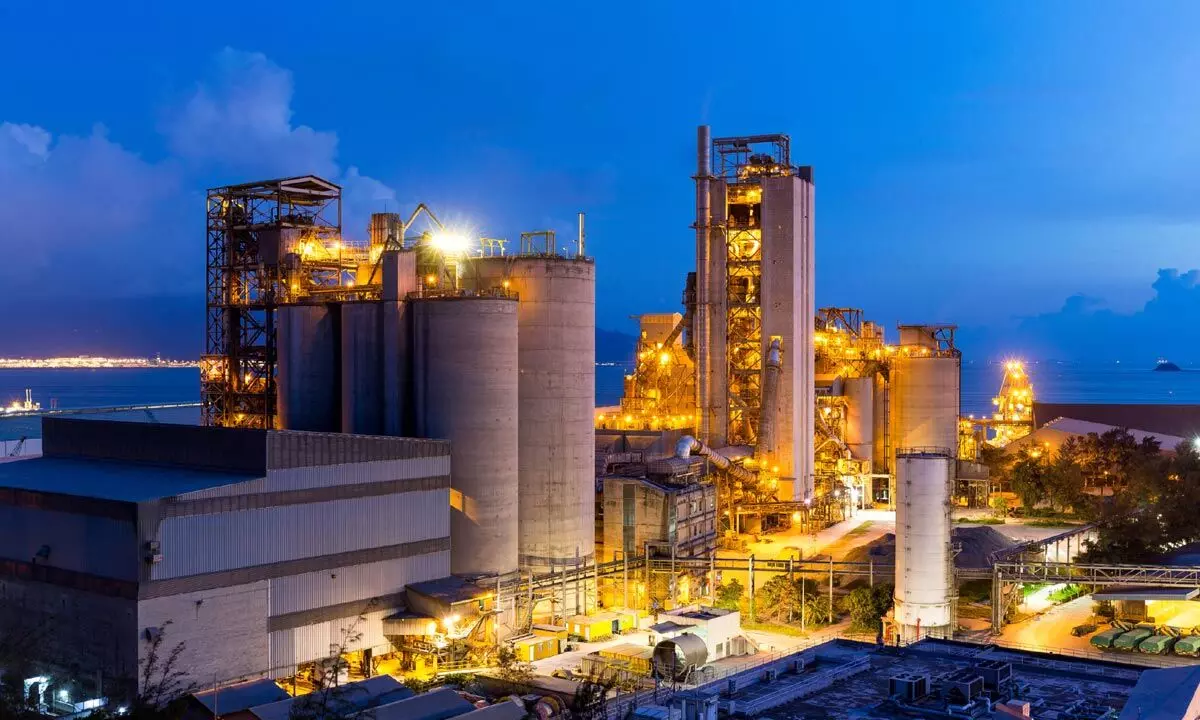Reforms must to reduce adverse impact of cement industry on climate change
The industry’s decarbonisation progress is yielding positive results
image for illustrative purpose

The industry also launched Climate Ambition to provide society with carbon neutral concrete by 2050, in line with global climate targets.
Today, suppliers and designers, and in turn their clients and customers, can use concrete to minimise carbon footprints by optimising mix, efficient use of materials and recognising the carbon uptake potential of concrete to permanently sequester CO2 in buildings. Concrete can also be reused and at end of life is 100% recyclable
At least nine per cent of global emissions caused by humans come from the cement industry. Around five billion tons of concrete is manufactured each year, which implies a staggering one cubic meter every year for every person on earth.
“Over the next 40 years, the world is expected to build 230 billion square meters in new construction, adding the equivalent of Paris to the planet every single week” said Fatih Birol, Executive Director of the International Energy Agency.
Given that the concrete industry is responsible for a staggering nine per cent of carbon dioxide emissions, there is a need for concrete reforms and new technologies to mitigate this effect.
Though very strong on the face of it, concrete can be brittle and prone to fracture. Current repair methods are inadequate resulting in a weakened material. Furthermore, human repair intervention requires even more material and adds to excessive emissions already produced by concrete production.
Currently, the reduction of emissions from cement relies on new carbon capture, utilisation and storage technology that will reach scale in the period from 2040 to 2050. Until then, emissions from cement production will continue for another 20 years.
Technologies that reduce the use of clinker, improve the process of cement production and reduce the use of concrete can potentially reduce carbon emissions from cement production from now to 2030. Roughly 2.6 billion tonnes of CO2 emissions could be avoided or mitigated through applying these technologies by 2050.
General carbon prices have almost reached €100 per tonne of CO2 in the European Union, a level that could become the norm by 2030. European regulations such as Fit for 55 add further financial pressure and incentives. At the same time, landfill costs from construction and demolition waste (CDW) affect the entire building ecosystem, with prices reaching €150 a tonne. Bearing in mind global average prices for CO2 and landfill, these costs could total approximately €210 billion in 2050. In addition, rising energy prices are increasing production expenses for traditional materials such as cement and concrete.
Till date, circularity technologies and circular business models have been viewed as an opportunity for decarbonizing the built environment, a perspective that significantly underestimates their impact.
A joint research by the World Economic Forum and McKinsey estimated that these technologies can decarbonize up to 80% of cement and concrete emissions (based on a cement demand of four billion tonnes in 2050), while reining in costs.
Concrete has excellent sustainability qualities and the industry has made significant progress in reducing its CO2 emissions from cement manufacture. The cement industry has reduced its carbon emissions by 19% since 1990 (GCCA in Numbers, 2020). The industry also launched Climate Ambition to provide society with carbon neutral concrete by 2050, in line with global climate targets.
Today, suppliers and designers, and in turn their clients and customers, can use concrete to minimise carbon footprints by optimising mix, efficient use of materials and recognising the carbon uptake potential of concrete to permanently sequester CO2 in buildings. Concrete can also be reused and at end of life is 100% recyclable.
Concrete is a product with raw materials locally available. The key ingredient of cement (approx. 10-15% of concrete by weight) is based on limestone, which is widely and abundantly available. This means that there is significant carbon saving in transportation, as the material does not need to be traded across long distances.
The 2050 roadmap represented the collective commitment of the world’s leading cement and concrete companies – representing 80% of global cement industry volume outside of China and some key Chinese companies – to decarbonise. We were the first global industry to set out such a detailed pathway.
Forty of the world’s leading cement and concrete manufacturers joined forces to accelerate the shift to greener concrete by pledging to cut CO2 emissions by a further 25% by 2030, marking a decisive step in the race to ‘net-zero’ concrete by 2050.
Building on the decarbonisation progress the industry has made over the past three decades, they are confident of achieving their goal, and the industry is demonstrating meaningful climate action today.
Around five billion tons of concrete is manufactured each year: a staggering one cubic meter every year for every person on earth. Given that the concrete industry is responsible for a staggeringly high nine per cent of carbon dioxide emissions, there is a need for concrete reforms and new technologies to mitigate this effect for this critical substance used worldwide.

